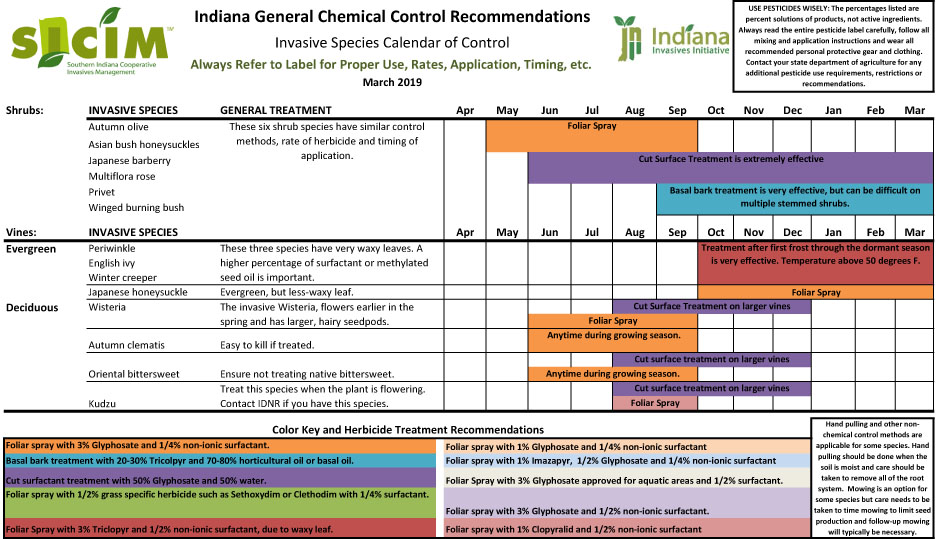Invasive Species
The Marion County SWCD is joining in the fight to help eradicate invasive species in our county and across the state, and replace these species with beneficial, native plants.
The 3 steps to address invasives are:
- Identify
- Eradicate
- Replace
“Invasive species continue to multiply across the globe, causing billions of dollars in losses,” explains Kevin Tungesvick from Spence Restoration Nursery, a wholesale producer of native herbaceous plugs and seeds of Ohio Valley and Great Lakes origins. “Whether accidentally introduced in seed from other lands, or intentionally planted for wildlife or landscaping, invasive plants represent a significant portion of these losses. Unfortunately, it is nearly impossible to judge whether an introduced plant is likely to be invasive. Plants like autumn olive and Callery pear were extensively utilized for a couple of decades with few problems, but have spread explosively in recent years. These two species are likely to soon be the most common invasive woody plants of open successional areas in the Midwest.”
Identify
Our SWCD is helping to promote the information needed to identify known problem invasive species so they will no longer be planted and those already growing in our county can be eradicated. In order to help residents identify invasive species on their own property or on public properties, fact sheets created by West Central Indiana Cooperative Weed Management Area (CWMA) with funding by the Nina Mason Pulliam Charitable Trust, can now be found on our website. These fact sheets show pictures and contain descriptions of common invasives found in central Indiana and provide suggestions for how to eradicate them. The CWMA consists of 27 western and central Indiana counties and strives to help land users identify and control invasive terrestrial plants through workshops, field days and other educational activities. Scroll down to click on pdf versions of these informative fact sheets.
In addition, the SWCD is encouraging residents to replace eradicated invasives with native species which are vitally important to our native insect, butterfly, bird and wildlife species. Non-native plants have little to no benefit to our local ecosystems and in fact are often quite detrimental, because they can take over large areas, wiping out native plant communities. Eradicating non-natives and reestablishing native species in their place can help maintain the food chain, stabilize our ecosystems and preserve our natural history.
Check out the invasive species fact sheets below and check our website frequently through the spring and summer for updates on upcoming workshops and educational activities on invasive and native species.
Eradicate
The methods and timing of eradicating invasive species are species-specific, so do your homework and prepare to tackle the problem areas effectively. Below is a calendar for guidance.


Download a pdf copy of the calendar HERE.
More helpful information on how to eradicate invasive species is available by clicking the links below:
Replace
Once invasives have been identified and eradicated, replace with plantings of native species to restore the natural ecology of our area. See more information on Native Species for Marion County, Indiana.
For additional help with Invasive Species, contact the Midwest Invasive Plant Network.
MIPN has created a brochure of alternative landscape trees, plants, vines and groundcovers that are native or have proven to be non-invasive. They also have a developed an app with similar information. Click HERE for more information.

